Bonsai trees are a form of art, carefully crafted and shaped into unique and aesthetically pleasing forms. But what are Bonsai trees, and what is the significance of their various styles? Let’s explore the fascinating world of Bonsai together!
1 What is a Bonsai Tree?
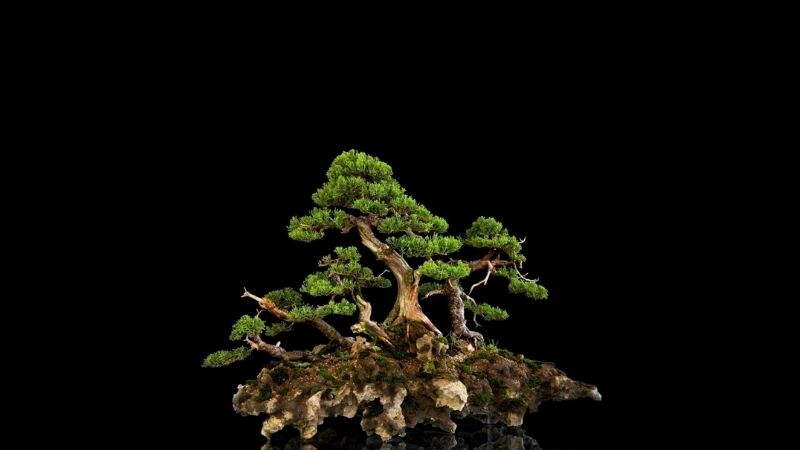 What is a Bonsai Tree?
What is a Bonsai Tree?
Bonsai trees are a unique form of art that combines horticulture and sculpture. These trees are carefully cultivated in pots or trays and shaped through a special technique, resulting in a blend of ancient and artistic elements.
Skilled artisans shape Bonsai trees into living artworks or living sculptures, showcasing their expertise and attention to detail.
2 The Feng Shui Significance of Different Bonsai Styles
Tam Da Bonsai Style
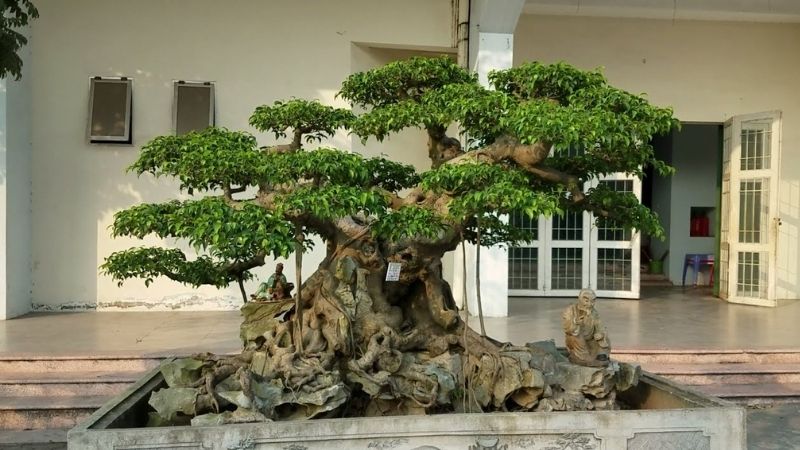 Tam Da Bonsai Style
Tam Da Bonsai Style
The Tam Da style features two branches with one tip, forming a harmonious shape. The leaves are carefully trimmed to create a round, full shape, symbolizing abundance and prosperity. Today, the branches and tips are styled more freely, with a natural and flexible approach while retaining the traditional direct transformation.
Tam Da also represents “Da Phuc” (many children), “Da Loc” (abundance of wealth), and “Da Tho” (longevity), reflecting the universal desires of people throughout history.
Thac Do Bonsai Style
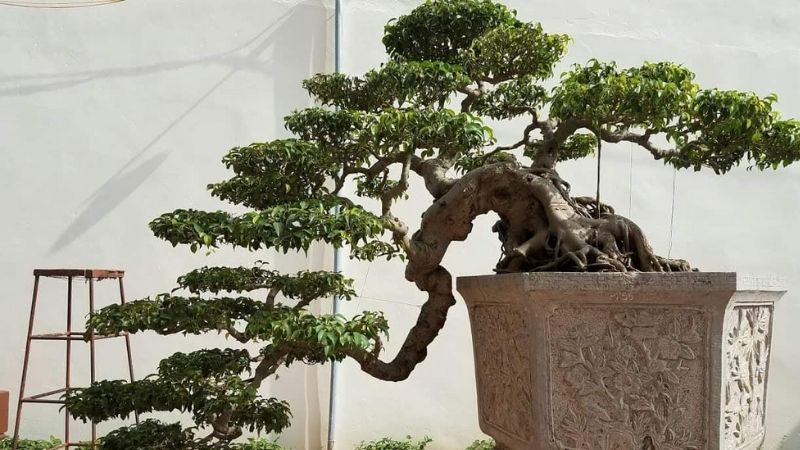 Thac Do Bonsai Style
Thac Do Bonsai Style
True to its name, the Thac Do style resembles a mighty waterfall cascading down a mountain. This style features a low-lying tree with a sprawling canopy that extends from the trunk towards the bottom of the pot, evoking the image of a flowing waterfall.
The graceful, curved shape symbolizes resilience and the life-giving power of water, representing the strength to overcome adversity.
Ngu Phuc Bonsai Style
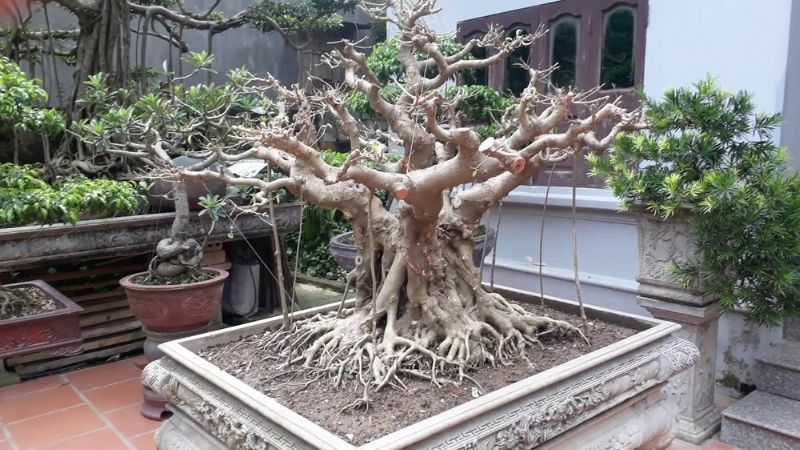 Ngu Phuc Bonsai Style
Ngu Phuc Bonsai Style
The Ngu Phuc style features five canopies, either on a single trunk or as a grafted tree with five trunks. This style is designed to resemble a mountain forest, with each tree having a unique shape and size, creating a harmonious whole. The trees can stand upright or lean, but the key is to have a variety of sizes, like a diverse landscape.
Ngu Phuc symbolizes the five blessings of “Phuc, Loc, Tho, An, and Khang,” representing prosperity, wealth, longevity, peace, and health. It is a popular choice for those seeking to bring all five blessings into their homes.
That Hien Bonsai Style
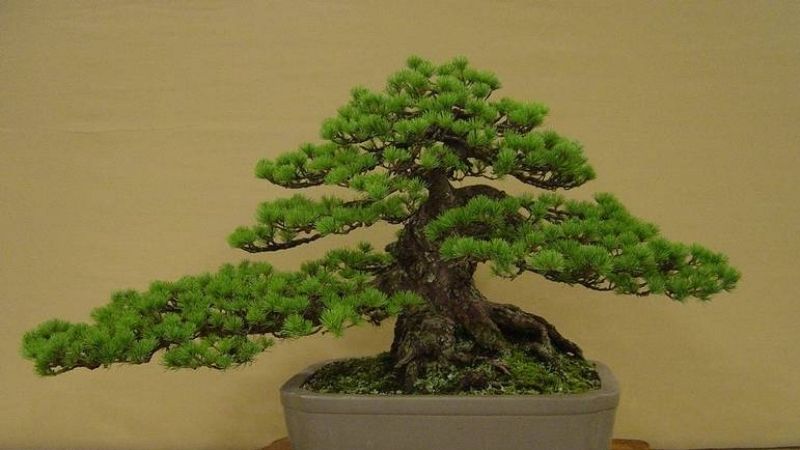 That Hien Bonsai Style
That Hien Bonsai Style
The That Hien style features seven branches arranged in a staggered pattern, with the largest branch closest to the trunk. This style symbolizes the seven wise and carefree sages, reflecting a positive and carefree attitude towards life, unbothered by fame or fortune.
Dai Truong Phu Bonsai Style
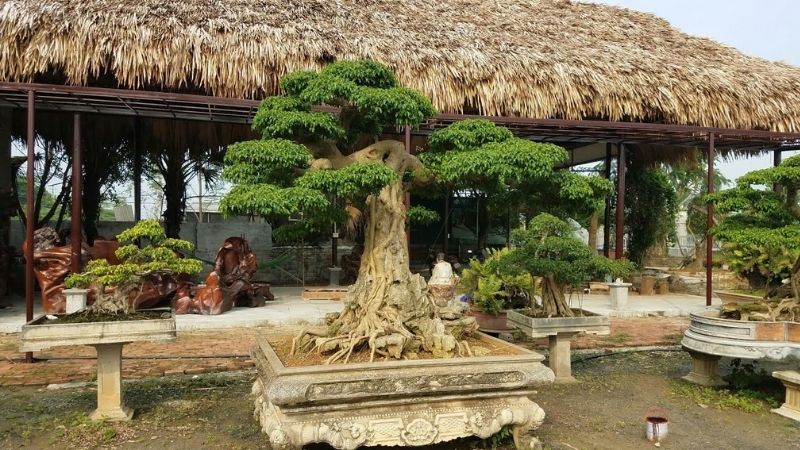 Dai Truong Phu Bonsai Style
Dai Truong Phu Bonsai Style
The Dai Truong Phu style exudes strength and power, with a tall, sturdy trunk, robust branches, and lush leaves. The tree stands proudly, symbolizing a true hero, a man of integrity and valor, admired for his martial and literary prowess, and known for his willingness to help others.
This style conveys a sense of uprightness, honesty, and chivalry, reflecting the qualities of a noble and respected individual.
Song Thu Bonsai Style
Song Thu Bonsai Style
Song Thu, or “twin trees,” features two trees intertwined around a single root, embracing each other closely.
This style symbolizes the loving care and protection found in relationships, whether between parent and child, husband and wife, or close friends. It conveys a sense of mutual support and devotion.
Long Chau Ho Phung Bonsai Style
 Long Chau Ho Phung Bonsai Style
Long Chau Ho Phung Bonsai Style
The Long Chau Ho Phung style is a favorite among bonsai enthusiasts, requiring meticulous craftsmanship from the artist. It features a dragon and a tiger, symbols of power and majesty, in a respectful and peaceful pose. The process of selecting the right trees, branches, and caring for them is extremely challenging.
This classic style in bonsai circles conveys a sense of dignified authority.
Dai Lam Moc Bonsai Style
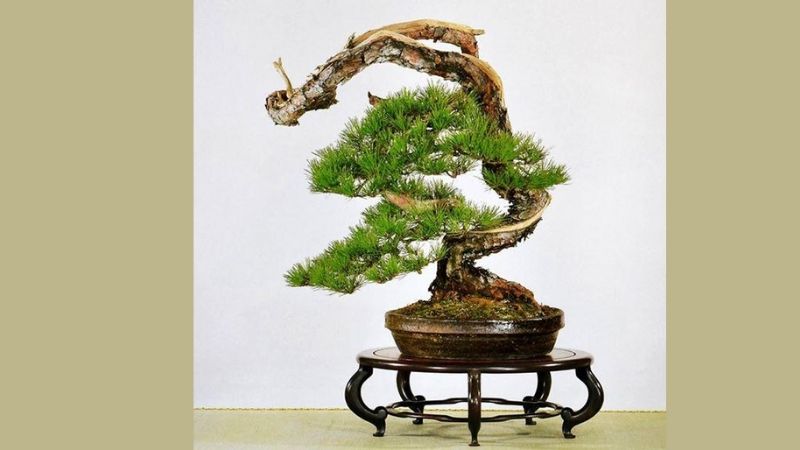 Dai Lam Moc Bonsai Style
Dai Lam Moc Bonsai Style
As the name suggests, the Dai Lam Moc style resembles a forest, with trees of varying heights planted together. The trunks are covered in moss, and the base is surrounded by a lush carpet of vegetation, creating a natural and artistic effect.
This style symbolizes longevity and family unity, with the diverse trees representing different generations coming together in harmony and prosperity.
Bat Phong Bonsai Style
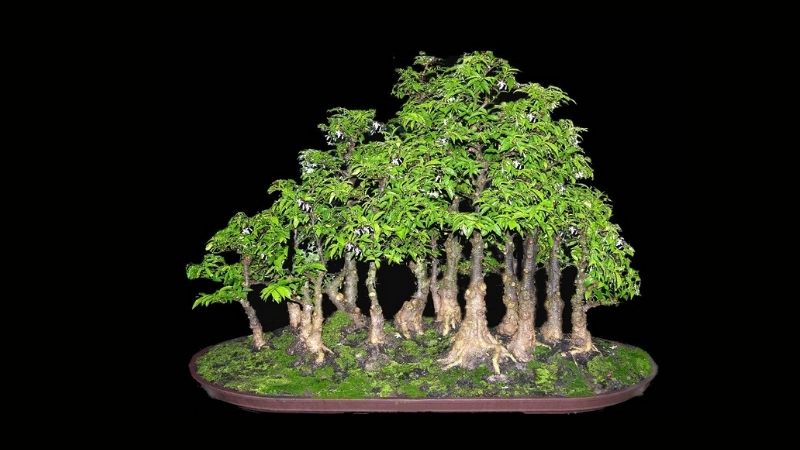 Bat Phong Bonsai Style
Bat Phong Bonsai Style
The Bat Phong style features a tree with a trunk that curves backward, forming a semi-circular shape.
This style conveys resilience and strength, symbolizing the determination to withstand any storm and the refusal to yield to adversity.
Tien Nu Bonsai Style
 Tien Nu Bonsai Style
Tien Nu Bonsai Style
The Tien Nu style is characterized by a delicate and slender tree with a gracefully curved trunk, reminiscent of a fairy’s enchanting silhouette.
This style embodies ethereal beauty, elegance, and nobility, inspiring admiration and reflecting a sense of refined charm.
We hope that this exploration of Bonsai styles and their Feng Shui significance has provided valuable insights. May you choose the perfect Bonsai tree to bring beauty and positive energy into your home!






























